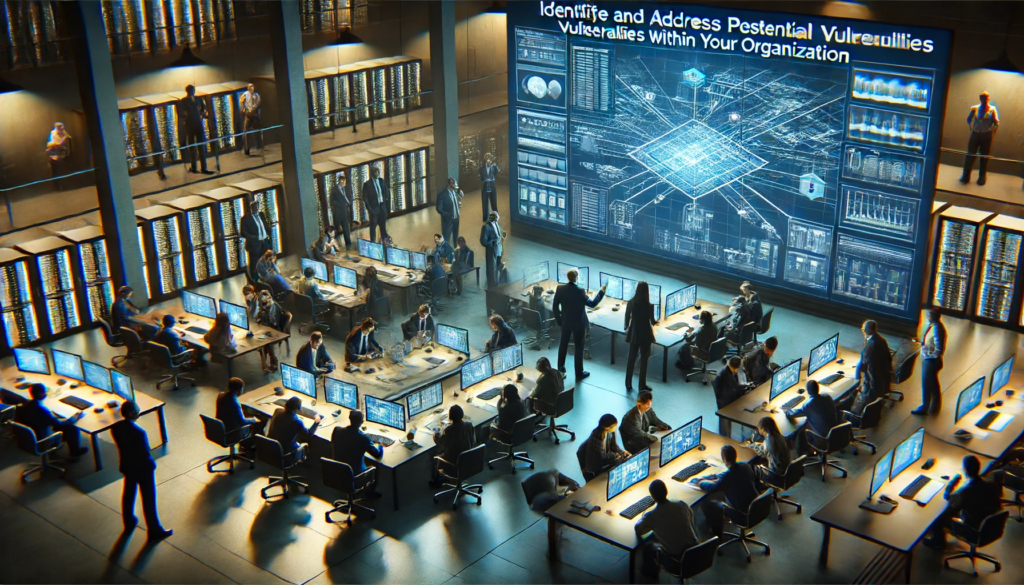In the unpredictable world of business, a crisis can strike when you least expect it. Are you ready to handle the storm? Having a bulletproof crisis communication strategy is your secret weapon. This article will walk you through the essential steps to not just survive but thrive during a crisis.
We’ll start with pre-crisis planning: assembling your dream team, identifying potential threats, and crafting a foolproof response plan. When a crisis hits, you’ll learn how to respond swiftly with clear, consistent information and unwavering transparency. Post-crisis, we’ll guide you through evaluating your response, understanding public perception, and leveraging feedback to refine your strategies.
A well-executed crisis communication plan doesn’t just protect your reputation—it builds trust and resilience. Ready to become a crisis communication pro? Dive in and discover how you can turn potential disasters into opportunities for growth and trust-building.
Understanding Crisis Communication
To manage a crisis effectively, you need to understand what crisis communication is and why it’s crucial. It’s not just about damage control; it’s about maintaining trust and safeguarding your organization’s reputation.
Definition and Importance
Crisis communication, essentially the procedures for sharing information during crises, plays a pivotal role in enabling effective response and disaster recovery for organizations. It’s the lifeline that keeps all stakeholders informed and helps to steer the situation towards resolution.

Crises are unpredictable, yet inevitable. Your ability to manage these crisis events effectively often hinges on the quality of your crisis communication strategy. A well-prepared communication strategy can make the difference between prolonged chaos and smooth crisis resolution.
- Preparation: The need to communicate effectively during a crisis is paramount. It’s crucial to prepare for a crisis before it happens. This includes assembling a crisis management team and outlining communication protocols.
- Execution: During a crisis, swift and clear communication is vital. This is when your crisis management team steps in, disseminating information promptly to all relevant parties.
- Evaluation: After the crisis, your team should evaluate the effectiveness of the communication strategy. This helps refine your approach for future crises.
The importance of crisis communication can’t be overstated. With a robust strategy in place, you’re better equipped to handle crises effectively, minimizing damage and fostering trust among stakeholders.
Types of Crises
In navigating the turbulent waters of crisis management, you’ll encounter a variety of crisis types, each requiring its own tailored communication approach. The types of crises you might face can range from natural disasters, product recalls to PR scandals.

Natural disasters, for instance, demand immediate, clear, and empathetic communication. Your crisis communication strategies here would involve informing stakeholders about safety measures and recovery plans.
Product recalls, on the other hand, necessitate transparency and assurance. You’d need to clearly communicate the reasons for the recall, the steps you’re taking to rectify the situation, and how you’ll prevent similar issues in the future.
In the case of PR scandals, your crisis management solution must include a sincere apology, a firm commitment to making amends and a detailed plan to avoid recurrence.
When a crisis comes, your tailored communication approach will heavily depend on the type of crisis. The key is to anticipate the type of crisis that might strike and to prepare accordingly.
Always remember, the aim is to reassure your stakeholders that you’re in control and that you’re taking all necessary actions to navigate through whatever crisis strikes.
Pre-Crisis Planning
Before a crisis hits, it’s crucial for you to be ready. This involves setting up a skilled crisis communication team, formulating an effective crisis communication plan, and conducting thorough risk assessments.
Let’s discuss how you can best prepare for potential crises.
Establish a Crisis Communication Team

You’ll need to kick off your pre-crisis planning by establishing a robust crisis communication team, carefully selecting members with diverse skills and clearly defining their roles and responsibilities. This is the first crisis communications step towards developing a crisis response plan, and it’s absolutely crucial.
- Selecting the team: The first step of crisis communications involves deciding who’ll be a member of the crisis communications team. Choose people who are calm under pressure, are good communicators, and have a strong understanding of your organization.
- Defining roles: Once you’ve gathered your crisis communications team, clearly outline everyone’s responsibilities. Who’ll be the main spokesperson? Who’ll monitor communication channels? Who’ll be in charge of assessing the crisis and updating the team?
- Training the team: Lastly, don’t forget about crisis training. Your team needs to be prepared to handle a crisis situation, and that involves training and rehearsal.
Develop a Crisis Communication Plan

Crafting a comprehensive crisis communication plan is crucial, setting the guidelines for communication channels, key messages, and escalation procedures. This plan is your roadmap during a crisis, providing steps to take for real-time incident management. A well-crafted plan is as essential as having a competent crisis team.
Your crisis communication plan should be designed for effective crisis management. It shouldn’t only address an existing crisis but also ensure your organization’s preparedness for future incidents. Remember, being proactive is always better than being reactive.
The plan should outline the communication channels to be used. From press releases to social media, the channels you choose should reach your target audience effectively. Your key messages should be clear, concise, and consistent to avoid confusion and misinformation.
Your plan should also include escalation procedures. Determine when and how to escalate the crisis internally and externally, who makes these decisions, and the criteria used to make them. This is important during a crisis as it ensures a quick and appropriate response.
In essence, comprehensive communication plans are crucial for managing and mitigating crises. So, start developing yours today.
Conduct Risk Assessments

Regular risk assessments are a crucial part of pre-crisis planning, as they allow you to identify and address potential threats and vulnerabilities within your organization. They form the backbone of your crisis communication plan, helping to predict when and where a crisis will occur. This proactive approach allows you to fortify your crisis communication infrastructure, ensuring you’re ready to respond effectively when a crisis hits.
- Identify Potential Threats and Vulnerabilities: Conduct thorough risk assessments to identify areas of weakness within your operational components. This could be anything from data security breaches to potential PR disasters.
- Plan for Crisis Situations: Use the results of your risk assessments to develop a solid crisis communication plan. This should detail how your communications team will manage a crisis, including specific roles and responsibilities.
- Prepare Your Infrastructure: Strengthen your crisis communication infrastructure based on your risk assessments. This could mean upgrading your technology, enhancing your data security or training staff to respond effectively to a crisis.
During the Crisis
Now that you’re in the midst of a crisis, it’s time to put your plan into action.
The first steps involve responding promptly and activating your crisis plan.
You’ll need to assess the situation, formulate your key messages, and disseminate them, all while monitoring feedback and reacting accordingly.
Initial Response and Activation of Crisis Plan
As soon as a crisis hits, your first move should be to activate your crisis communication plan and mobilize your crisis team. Immediately after a crisis, time is of the essence, and a swift response is vital. With a well-thought-out crisis communication plan in place, you’re not starting from scratch. Instead, you’re activating the crisis plan that has been prepared for such eventualities.

The process involves a well-coordinated dance of crisis team mobilization, crisis response, and laying out the crisis communication infrastructure. The steps taken at this stage lay the foundation for the entire crisis communication process. It’s a critical moment when the crisis team activation happens, and the crisis communication activation begins.
To put it into perspective:
- The crisis hits, and you activate your crisis communication plan.
- Your crisis team is mobilized, ready to tackle the crisis head-on.
- The crisis communication infrastructure is set in motion, ensuring a smooth crisis communication process.
The effectiveness of your crisis communication strategy depends on how well these steps are executed. Remember, the goal is to manage the crisis effectively and minimize damage.
Now, let’s move on to assessing the situation.
Assess the Situation
Once your crisis plan is activated, it’s crucial to swiftly gather all available information to assess the situation accurately. This step is paramount, as the ability to correctly assess the situation can make or break your crisis communication plan in place. Accurate information enables you to comprehend the scope of the crisis, understand its effects, and predict its potential impact.

Your crisis communications infrastructure plays a significant role during this phase. It allows for a swift collection and analysis of data, which then supports the decision-making process. Remember, every crisis situation allows for different ways to communicate, and your tailored communication response should reflect this.
Effective media communications are vital in managing stakeholders during a crisis. They can help shape perceptions and manage expectations. But for this to happen, you need to ensure that your messages are based on accurate information.
Understanding the effects of a crisis, both internally and externally, is equally important. This understanding can guide you in deciding how best to communicate with your stakeholders. So, always prioritize assessing the situation as the first step in your crisis response.
Craft and Disseminate Key Messages
Crafting and disseminating key messages during a crisis is a pivotal task that requires careful thought and strategic execution. This stage of crisis communication is vital, as it sets the tone for how your organization handles the situations at hand. A properly crafted key message can turn a potential disaster into a triumph of transparency and accountability.

To successfully craft and disseminate key messages, you need a plan template, a top public relations executive, and consultants to run through the 10 steps. Your plan should outline:
- The type of crisis your business could face
- The appropriate response strategies
- How to handle the aftermath
Having a crisis communication plan in place before a crisis hits can help your organization smoothly navigate through the storm, ensuring that communication is essential and effective. Your top public relations executive should lead this process, with consultants on hand to provide expert advice and run through the various stages of crisis communication.
Monitor and Respond to Feedback
During a crisis, it’s crucial to actively monitor public sentiment and media coverage, promptly addressing any feedback or misinformation that arises. Your crisis communication strategy should have a plan in place for this critical phase. This is where your communications team on the receiving end of the PR crisis becomes instrumental.
They are tasked with monitoring public sentiment closely, gauging reactions, and responding to feedback. This rapid response helps to correct misinformation in real-time, preventing it from spreading further and causing more damage.

When preparing a crisis communications plan, consider the various channels through which you’ll interact with stakeholders during a crisis situation. The mediums chosen should effectively facilitate real-time communication, ensuring all stakeholders are informed and updated promptly.
Here’s a brief guide to follow:
| Task | Details |
|---|---|
| Monitor | Keep a close eye on all media channels |
| Respond | Address feedback and correct misinformation swiftly |
| Update | Regularly inform stakeholders about the situation |
| Review | Continuously assess the effectiveness of your actions |
| Adapt | Alter your approach as necessary based on feedback |
Proactive monitoring and timely responses are key to successful crisis communications.
Post-Crisis Communication
Once you’ve managed the crisis, your job isn’t over yet.
It’s vital to evaluate your response, update your crisis communication plan, and share the lessons you’ve learned.
Let’s discuss how you can effectively carry out these post-crisis steps.
Evaluate the Response
After the crisis has been managed, it’s crucial for your team to evaluate the effectiveness of your communication response, pinpointing both the successful strategies and areas needing improvement. This step, known as evaluating crisis communication response, is a key part of the post-crisis analysis and integral to the overall crisis communication process.

Your effectiveness assessment should focus on three main areas:
- Message Delivery: Did your crisis communication plan ensure your message reached all of your stakeholders in a timely manner?
- Message Reception: How did your audience react to your messaging? Were they understanding, or did they express confusion or frustration?
- Message Impact: Did your communication strategy achieve its intended outcomes? Did it help mitigate the crisis and preserve your reputation?
Identifying areas for improvement in your crisis response evaluation isn’t an admission of failure, but a valuable learning opportunity. By conducting a thorough crisis management review, you can refine your crisis communication strategy to better handle future crises.
Update Crisis Communication Plan
To ensure your organization is better prepared for future crises, it’s crucial to update and refine your crisis communication plan based on the lessons learned from the recent crisis. It’s not a matter of having the crisis; it’s how you handle it that counts. This requires running through steps 1 – identification, preparation, response, and recovery – and adjusting your plan accordingly.
Yes, there’s a cost of preparing a crisis communication plan, but consider it an essential part of risk management. Don’t stick your head in the sand pretending you won’t know a crisis will occur. The plan tailored to your organization should include operational and communications components. It should be comprehensive, yet adaptable, allowing for real-time changes as the crisis unfolds.

A small team of senior executives should be identified, prepared, and ready to execute the plan. These senior executives should be the face of the crisis, providing clear, consistent, and timely updates.
Communicate Lessons Learned
Sharing the lessons learned from a crisis is a crucial step in post-crisis communication, as it strengthens your organization’s resilience and builds trust among your stakeholders. This task, also known as a crisis review or debrief, is a must-do activity for any crisis communications team.
- Identify Improvements:
Review the decisions made after a crisis and identify areas where improvements could have been made. This process often involves your public relations executive and legal counsel, identified to serve as your crisis communications advisors. - Revise the Plan:
Use the lessons learned to revise your crisis communication plan. This is a key step to take when a crisis has concluded. It ensures you’re better prepared for the future and communicates to your stakeholders that you’re committed to continuous improvement. - Share the Knowledge:
Communicate these lessons to your stakeholders. This transparency builds trust and demonstrates your dedication to learning from your experiences.


